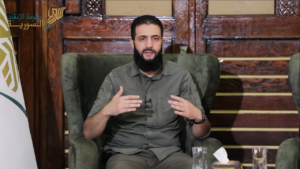At Jihadica, we usually don’t weigh in on policy debates. I’m reluctant to break that tradition but I have a few thoughts on countering violent extremism that I’d like to workshop with Jihadica readers before turning them into something more.
The United States and its allies devote considerable financial and human resources to countering violent extremism (CVE). Nevertheless the definition of CVE is unclear, ranging from fighting bad guys to creating good guys. This lack of precision makes it hard to design, execute, and evaluate CVE programs and makes it easy to slap the CVE label on all manner of initiatives, including many that seem to have little to do with stopping terrorism and might otherwise be cut by Congress. The lack of precision also inhibits thinking about whether the CVE enterprise is worthwhile and what should constitute it.
In the interest of clarifying the activities covered by CVE and encouraging debate on their relative merits, I propose the following definition: Reducing the number of terrorist group supporters through non-coercive means. (I might also propose a new label and acronym for this activity but “CVE” is so bland and prevalent that it’s not worth jettisoning.)
This definition has several things to recommend it:
- It is broad enough to cover most of what people describe as CVE (or, in UK parlance, “Prevent”).
- It is narrow enough to exclude insurgent organizations and gangs that don’t primarily attack civilians for larger political objectives (an activity usually called “terrorism”).
- It suggests a metric: reducing the number of a terrorist group’s supporters. The focus is not on reducing support for ideas, which is difficult to judge, but rather support for specific organizations that embody those ideas and seek their realization, which is easier to document and more closely related to criminal behavior.
- It excludes coercive kinds of “countering” activity that are better left to law enforcement and militaries (e.g. arresting, killing).
- It acknowledges that there is a spectrum of support, ranging from lone wolves to bona fide members of a terrorist group. Moreover, support does not necessarily imply criminal behavior. The “supporter” label applies to anyone who expresses uncritical enthusiasm for a terrorist group’s program and actions.
To operationalize this definition of CVE, two questions must be answered. First, what terrorist groups deserve programmatic attention? Typically, they are those deemed to pose the greatest threat to a country. Second, what kinds of supporters deserve programmatic attention? Is it people vulnerable to becoming supporters? People who are becoming supporters? Law-abiding supporters? Criminal supporters? Incarcerated supporters? Answers to these second set of questions vary from country to country, resulting from differing assumptions about who is amenable to positive change and how they are identified; unique laws, national security priorities, and political culture; and competing interests and missions of the country’s institutions. For the U.S. government, CVE programming focuses on people who are vulnerable to becoming supporters of al-Qaeda. (In a follow-up post I will explain why a narrower focus on law-abiding supporters might be more useful.)
There is at least one objection to the definition above: Its resulting programs would not cover terrorists like Anders Breivik or the Unabomber, who did not profess loyalty to, or common cause with, any terrorist group. But ideologically-independent and socially-reclusive lone wolves like these are extremely rare and extremely difficult to detect. If a CVE definition were crafted to cover them, it would be so broad as to be useless, which is the current state of play.






8 Responses
I’ve been reading this blog for years, and it is a proven fact that the logic used to formulate these articles fails to understand the fundamentals of good logic, in fact, it clearly ignores good and sound reasoning.
I am someone who doesn’t earn a dime for my thoughts or words, but I will be the first to say that they have more value than the ones used without foundation.
it is a major letdown to see these reoccurring posts that discredit the pillars of education and therefore viva la revoluccion.
Why even use CVE to begin with (aside from the fact that others do)? It sounds like it will become the new GWOT – something that beaurocrats and others latch on to initially, but eventually withers. If your proposed definition does not even mention ‘extremism’, then why use the term? Also, who would you consider a ‘supporter’? Why not start with what you’d like to achieve with these non-coercive activities, and then find a nice label and acronym later?
I agree that the label CVE isn’t very useful but it’s what policymakers are familiar with. Also, it isn’t as obnoxious as GWOT. If it were just up to me, I’d use Countering Terrorist Recruitment.
Prof. McCants,
I would recommend changing the proposed definition to “reducing through the use of non-coercive means the portion of a target population who personally believe one or more specified ideas which justify violent action.” The list of specified ideas would include, but not be limited to the following:
-that Shia/Sufis/non-Salafis are disbelievers (broken down into subcomponent questions)
-that governments or political parties which participate in democracy are disbelievers
-that a Caliphate should be created through the use of violence
-that the dawa should be spread through the use of violence
A definition which focuses on particular groups, and not their underlying ideological underpinnings, has several flaws in terms of measuring effectiveness, and in terms of predicting future extremist challenges. Using support for a particular group as the primary metric, especially in the case of al-Qaeda, risks giving ourselves credit for flagging support in many regions for al-Qaeda when in truth the cause for decreasing support is a mass reaction to AQ excesses, not any success in decreasing support for their overall program. Living and working in Jordan, I have had discussions where Islamists have expressed support for AQ’s overall goals and programs, but dismay for the indiscriminate nature of AQ spectacular attacks, especially those that target other Muslims. Hence, at least in Jordan, there is still support for AQ’s goals and worldview, just disgust with the particulars of AQ’s military campaigns. While the metric of support for AQ would show that CVE efforts here has been successful, it would mask the truth that there is a latent support group for any other extremist group that had the same goals and ideals as AQ, but just a more discriminate view of the use of violence—we have not reduced support for extremism, we have just benefited from AQ’s poor decision-making, and still face a population ready to rapidly support a follow-on group that was more politically-savvy. Metrics based on support for AQ or affiliated groups might give the impression that the situation in Jordan was good, whereas metrics based on specific ideas that facilitate support for violence would more accurately reflect the situation in terms of potential support for violence or unrest. Syria presents another case where data on the state of support for ideas which facilitate extremist violence would be more useful for policy makers than support for specific extremist groups. Based on their dependence on Syrian support and safe-havens, various extremist groups of had wildly differing stances towards the Assad regime, causing their level of support by the opposition to be colored by the political maneuvering of these groups’ leaderships. In contrast, an understanding of the level of ideological support among the Syrian population for extremist ideals would be an important tool for policy makers to determine the risk of Syrians openly tolerating or supporting the movement of al-Qaeda in Iraq into Syria, or of “free” portions of Syria being likely or not to become safe-havens for such groups. In terms of collecting data, the level of difficulty in polling local populations for either set of metrics should be roughly equivalent.
I fully agree with keeping the definition of CVE to non-coercive efforts, and in the use of the concept of a spectrum of support.
If you keep your current definition, believe that the concept of legal support needs to be expanded to include groups which operate legally which drive their supporters to believe in an ideological program that fully facilitates extremist behavior, even if the group itself disavows violence in its own name. Hizb ut-Tahrir is a prime example of a group which operates legally (in some countries, at least) and does not conduct violence itself, but by actively working to spread the ideas that current Arab governments are participating in disbelief, and therefore disbelievers themselves, and agitating for military coups, works to build a groups of supporters who are fully prepared ideologically to participate in extremist violence. While HT disavows violence, its ideals make the decision to take violent action an extremely small additional step. Therefore, HT itself I believe sits in the red portion of your spectrum, at the boundary between law-abiding and incarcerated (country dependent).
Thank you for your time,
Rob
Rob, thank you for your detailed comments. I think if we move away from criminal activity we stray into the policing of thought crimes, which is a bad idea.
I believe the entire “CounteringViolentExtremism” is located where ideological subversion and mindless (and deliberately mindless) pol-sci babble intersect.
Ideological because it faithfully reflects the requirements of the post-modern narrative to describe any thought that is firmly held as extreme and anyone who would fight for it a violent extremist. The term could as easily apply to 3rd graders in a school-yard fight as it could to AQ (or the MB). More ominously, it makes no distinction, because it can make no distinction, between returning veterans and AQ — or more directly, those who would defend the Constitution and those who would wage jihad. This is not an unintentional activity.
It is the same driver behind subordinating the First Amendment to state filters whether its helping the passage of UN Resolution 16/18, the redefinition of religion (and the free practice thereor) as simply worship, or the destruction of freedom of association by requiring that they subordinate to government regulations (must pay for things you do not agree with that you have a right to dissent from).
This also reflects the post-modern narrative in that, because there are no facts, there is no truth and because this is true, it necessarily means that all views are little more than interpretations where, given the deep doctrinal relativism (cum nihilism) underlying this view, necessarily further means that all views are equally meritorious (or unmeritorious)! The US Constitution is no more deserving than AQ’s jihadism – even to Americans living in the United States!
Pol-Sci babble because the whole tortured language of faux objectivity underlying the bizarre narrative allows for faux players to enter the narrative pretending they are talking about jihadi based terrorim when in fact they are just maintaining the CVE narrative that exists to distract from the real thing – while getting the public used to associating returning vets with AQ.
You see, there is no such thing in the here and now world as “violent extemism.” There is no cause or national entity or movement that declares, on banners no less, that they are engaged in violent extremism in the name of violent extremist causes (a quick google search will reveal that not only is this true, but that it is also true that the only folks who do talk this way are soft science academics, government entities – primarily federal L.E. and national security – and cloying media).
Unfortunately, there are, however, real groups in the here and now world that say they are jihadi’s who fight jihad in the name of Islam (even IF they are wrong about their “version” of Islam). The CVE narrative allows FAUX players to develop generic soft-science models to explain VE while the language of jihad requires REAL players to orient on the REAL facts of there being declared jihadis, the FACT of their published doctrines, and the FACT of their mapping (or failure to map) to the FACT of Islamic law that they say drives their activity.
The information operations folks would have loved to have pulled this off against – say, the Soviet population during the Cold War. The Nazi’s tried with Lindberg. Instead of the hard (and now politically incorrect) task of mapping the REAL threat to the REAL (i.e., factual) drivers, one can now develop neutral – and ultimately meaningless – narratives that orient to soft science (pol-sci, anthropological, psycho-social) models favored by cubical-land bureacrats working with soft-science acadeamicians over real and professional inquiries and investigations that favor factual analysis based on rules of evidence.
The need to define reality through the template of safe social science models that are themselves heavily influenced by political considerations meets a the need to have milk-toast analysts and academicians pretend to comment in politically correct (but useless) terms on issues that are out of thier league. To the extent discussions are focused on CVE, they are NOT about Jihadi-based terrorism. The wheat is already starting to separate from the chaffe. In the short-run, the chaffe will appear to be winning, but over time … the truth will prevail!
The entire CVE narrative (and it is a narrative) deserves to be derided and kicked to the curb!